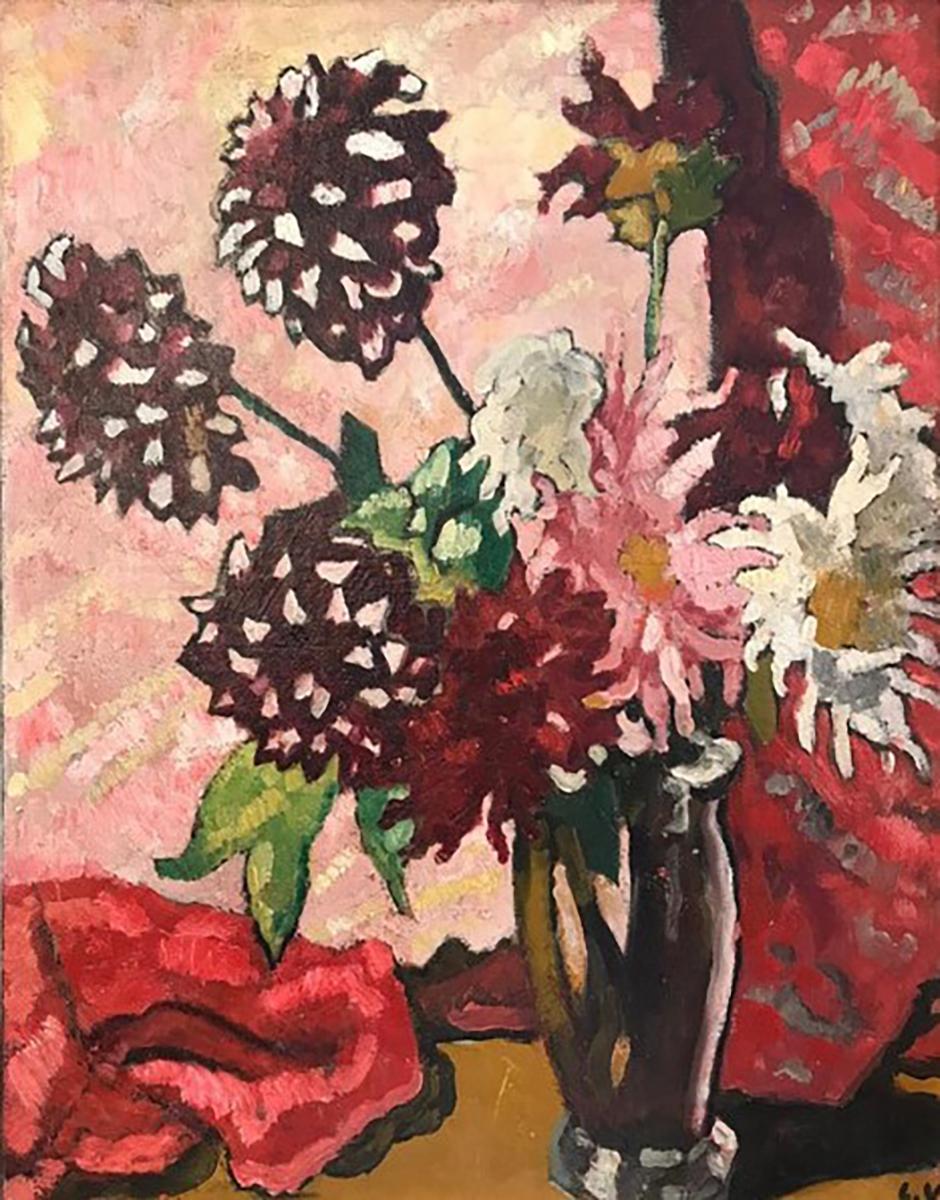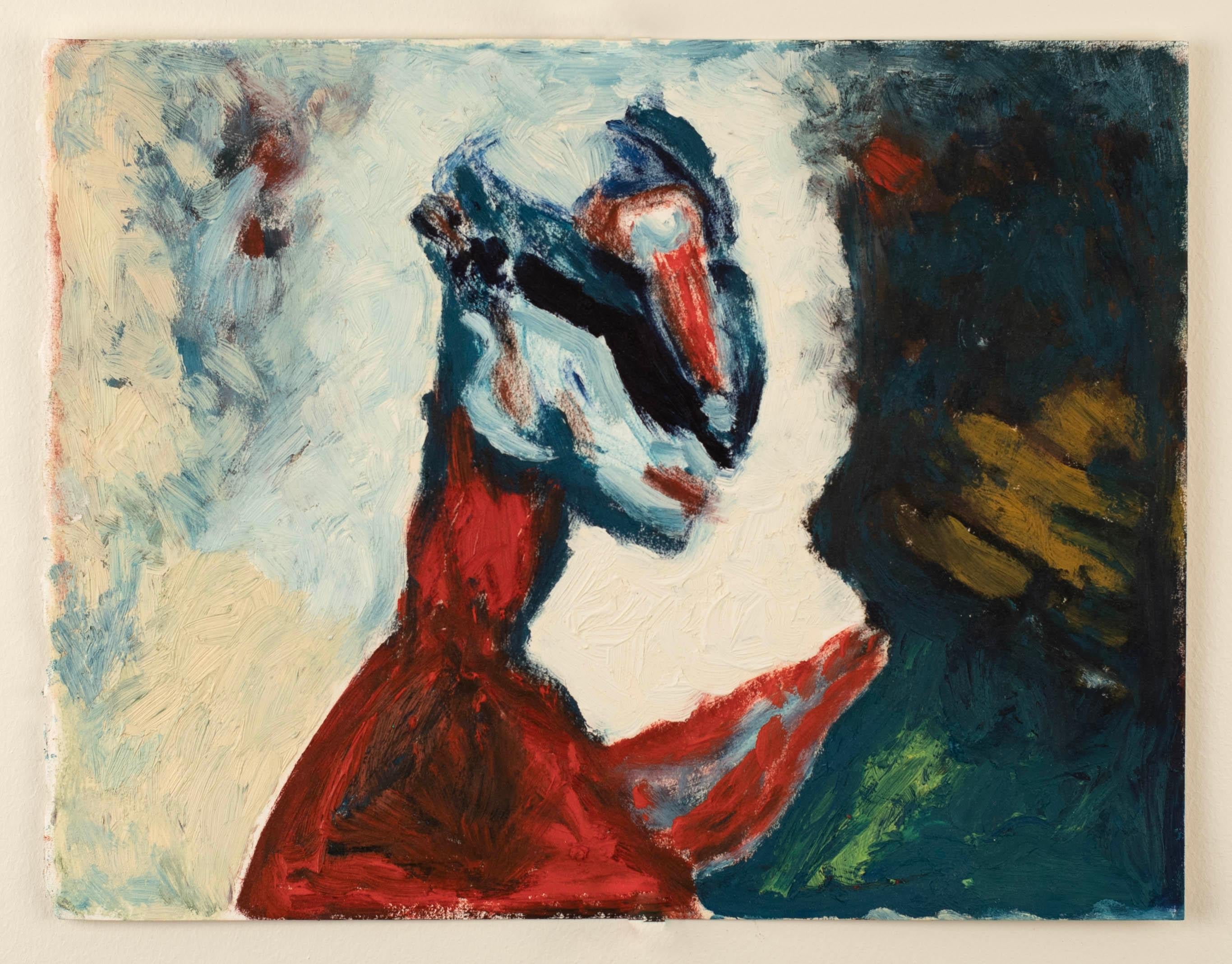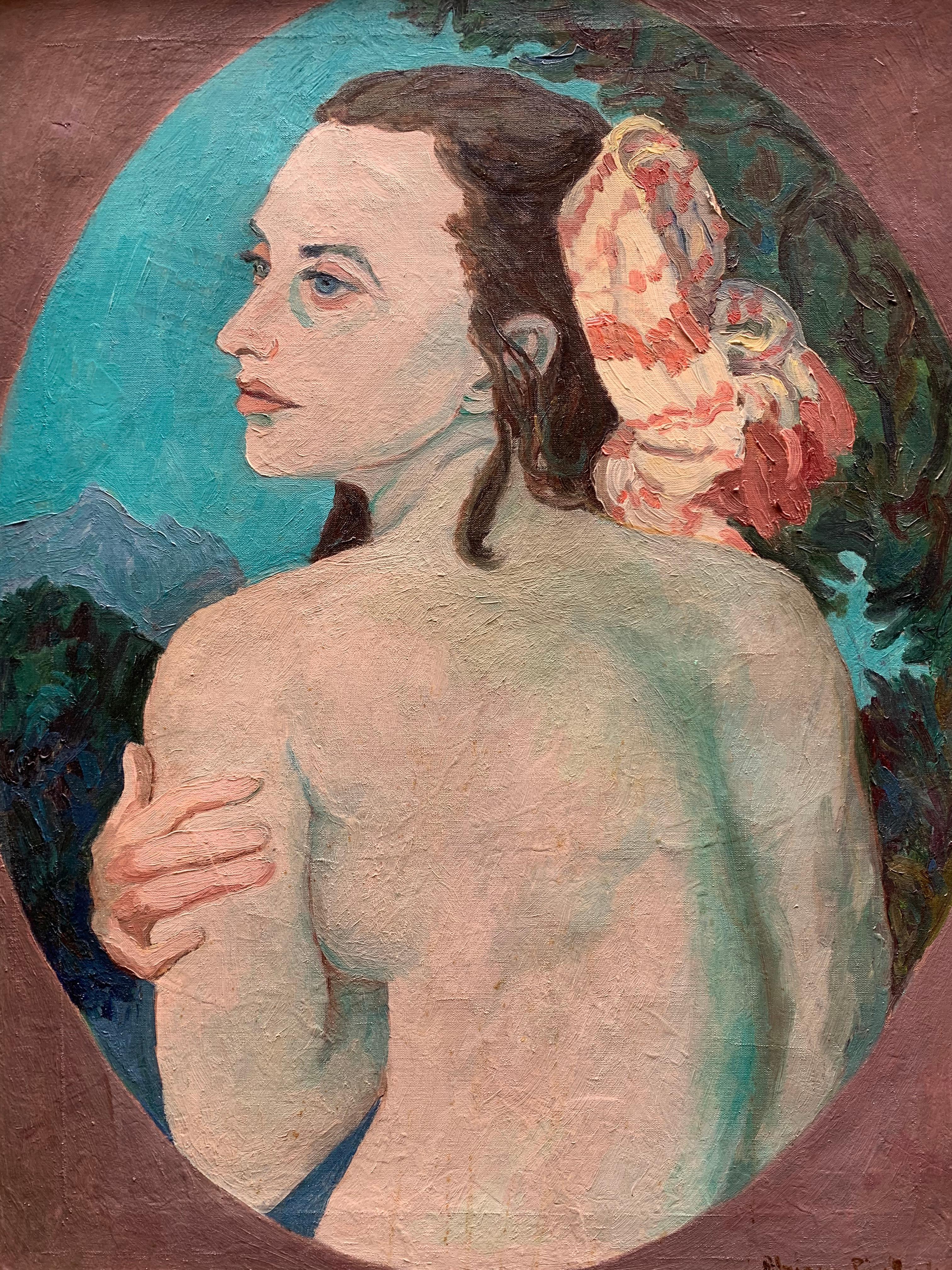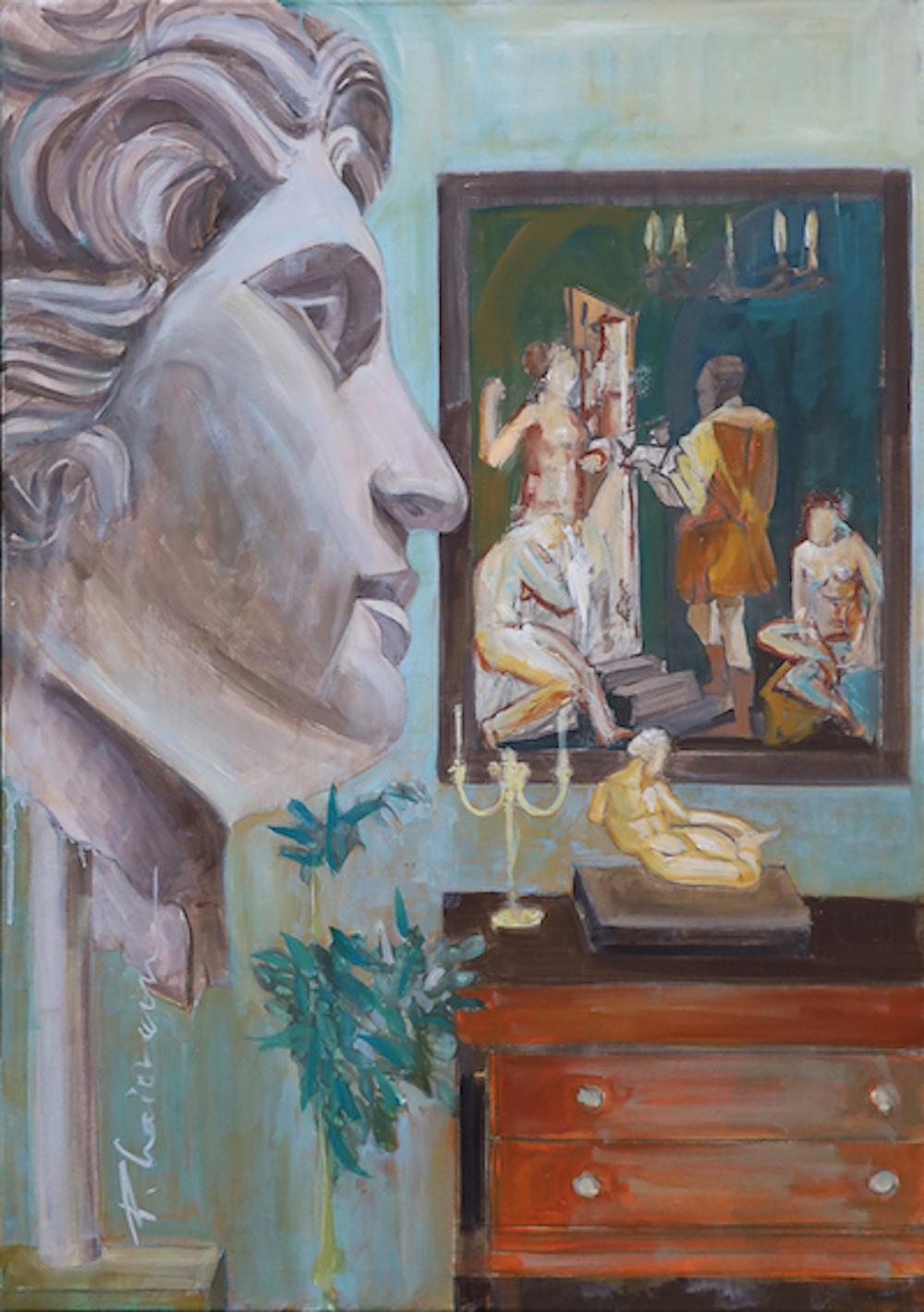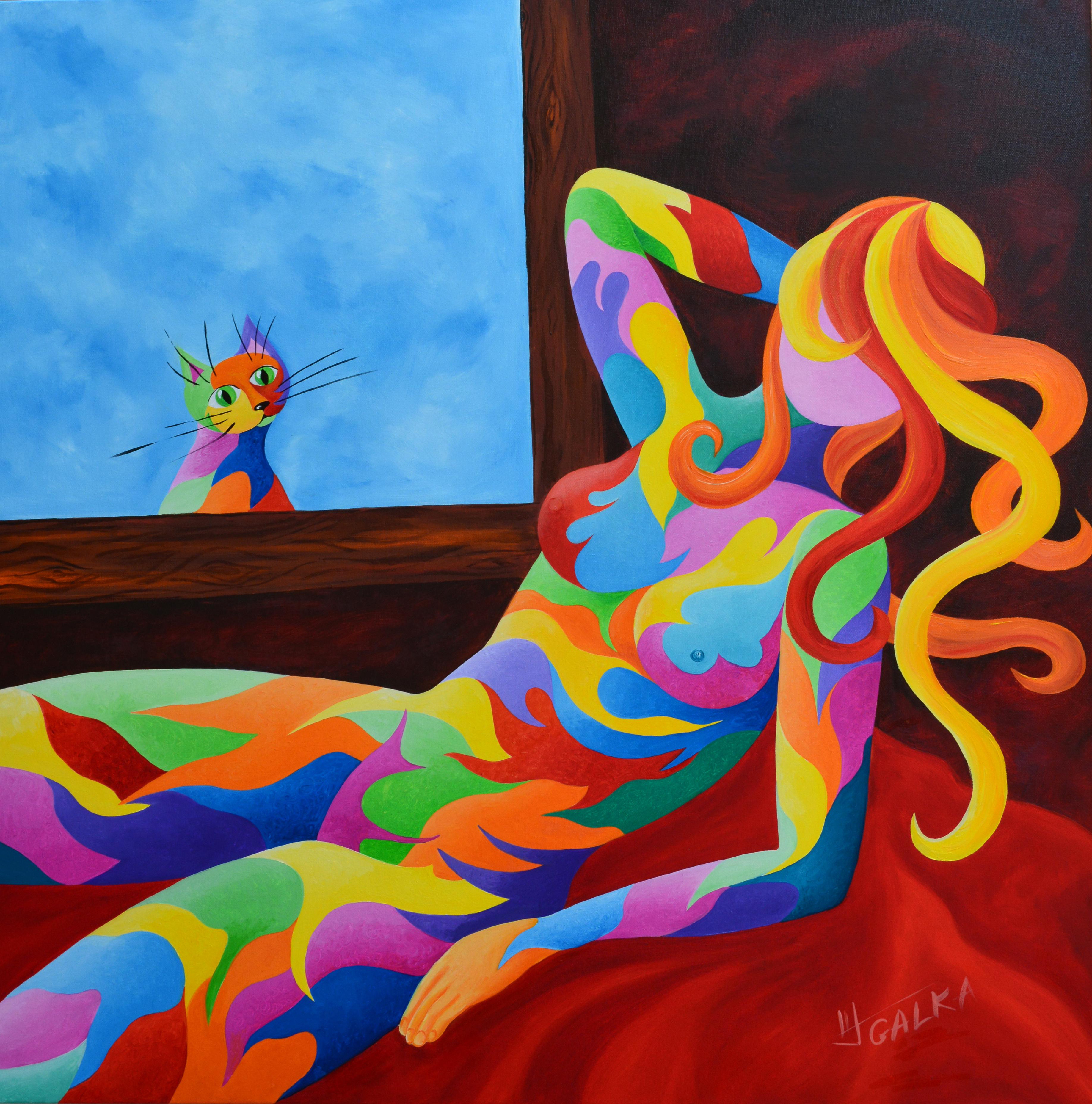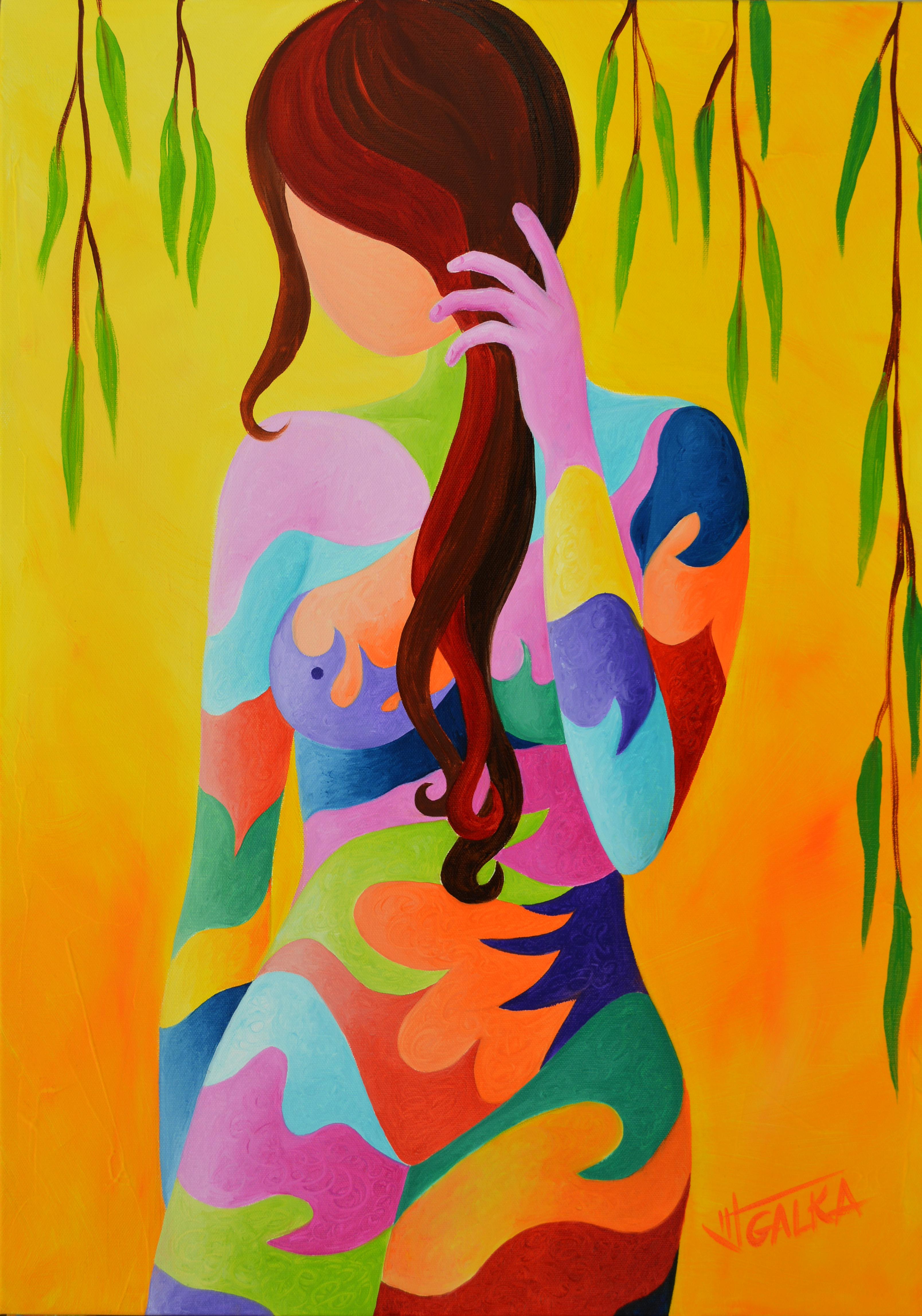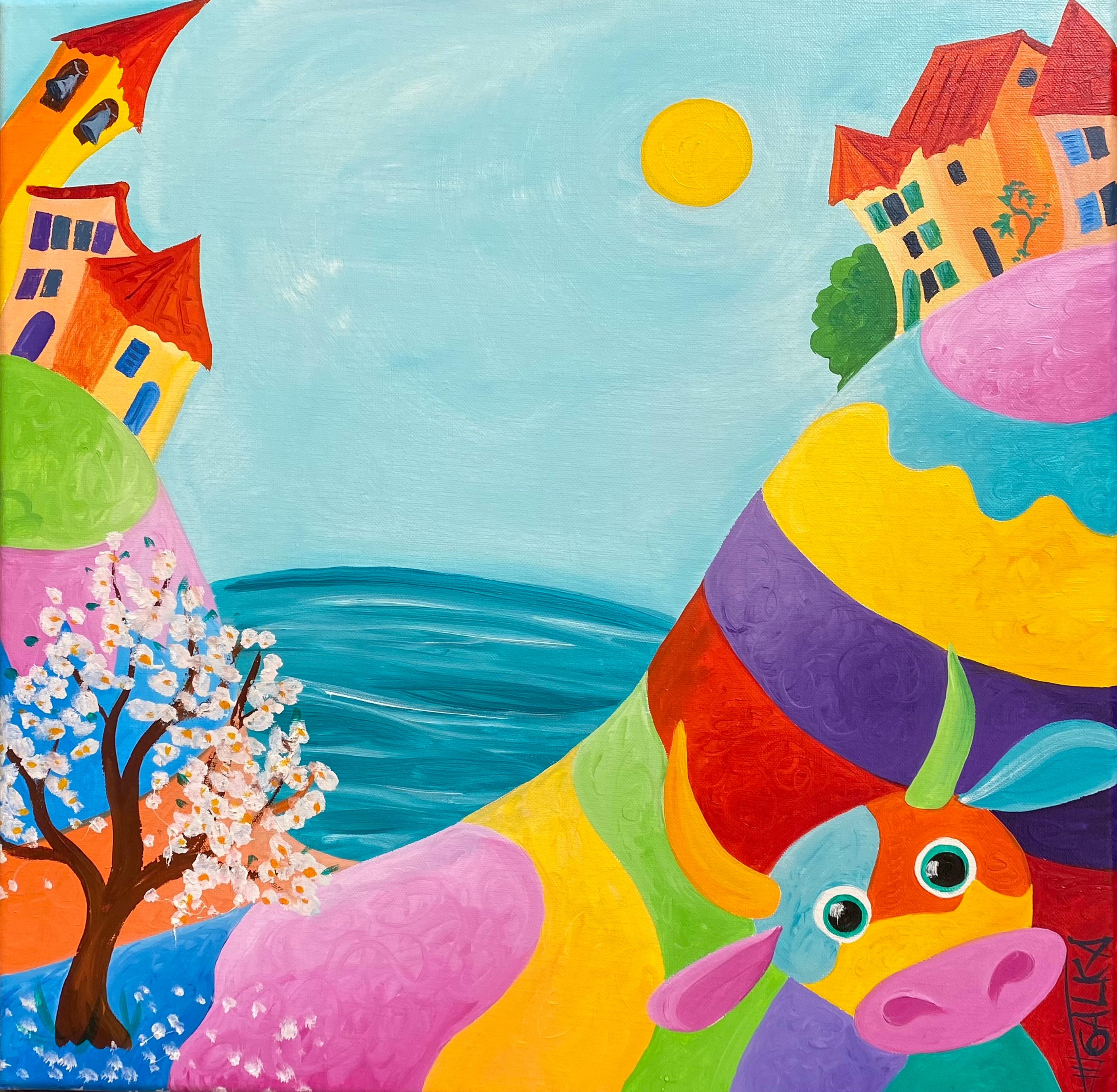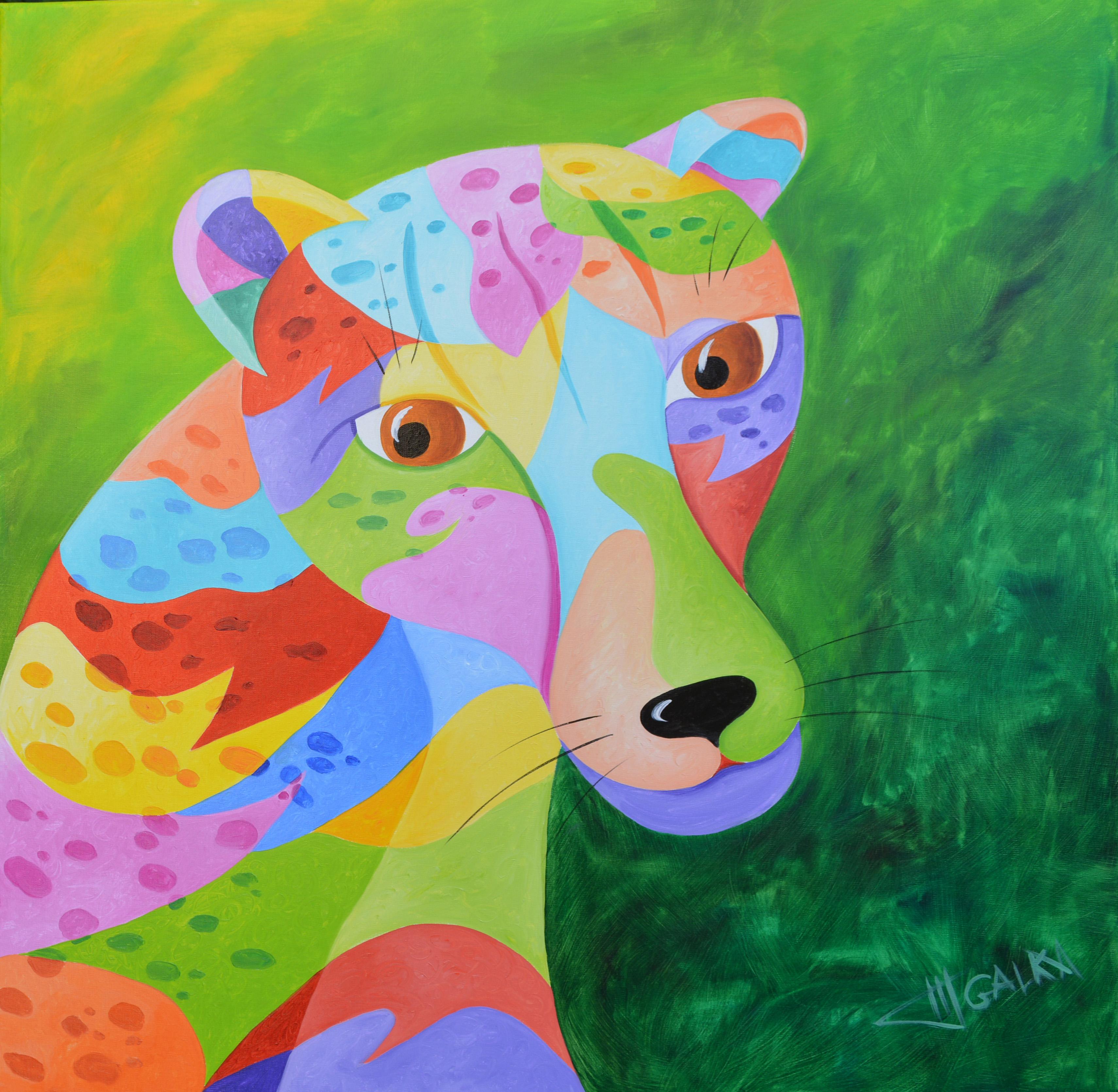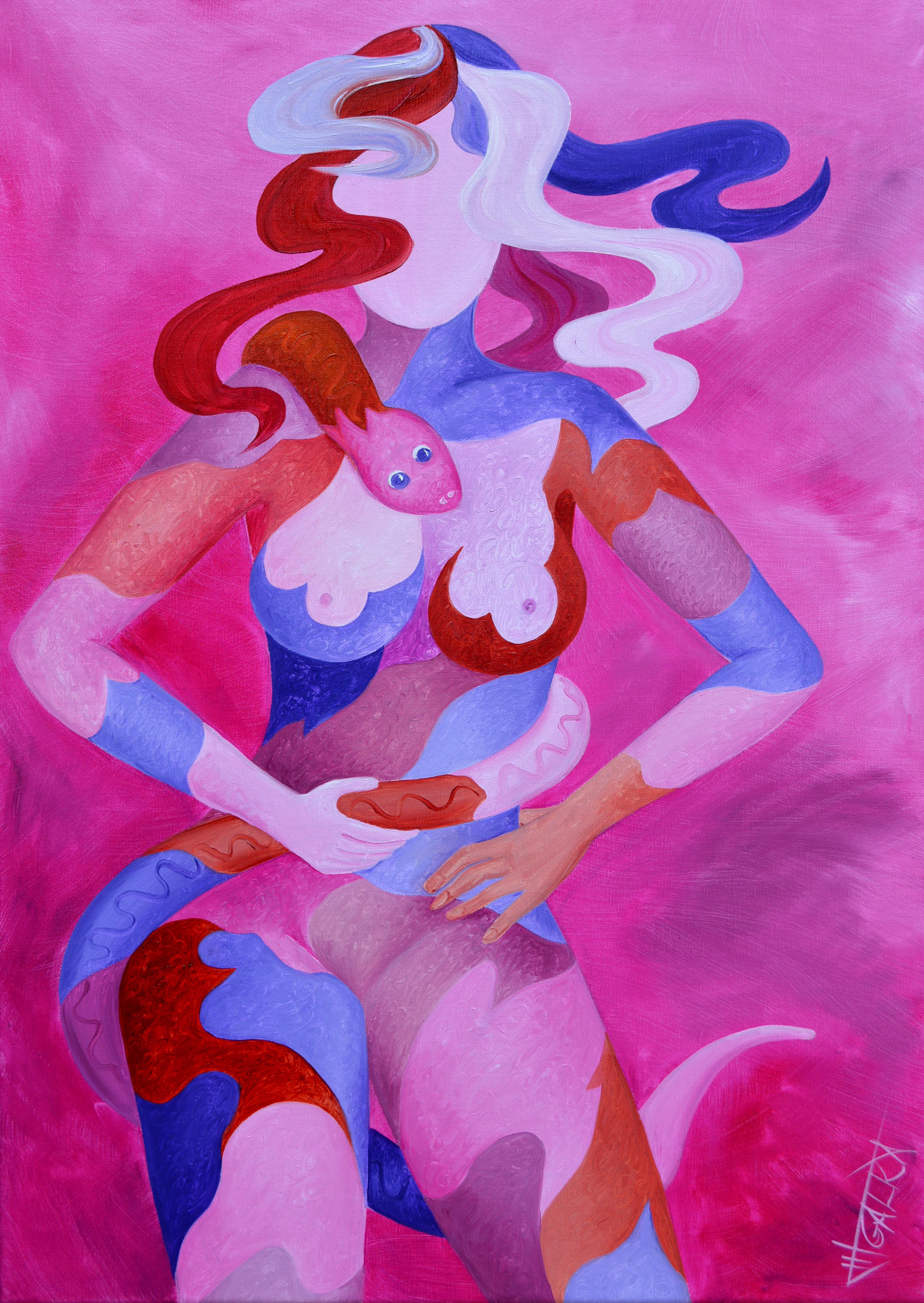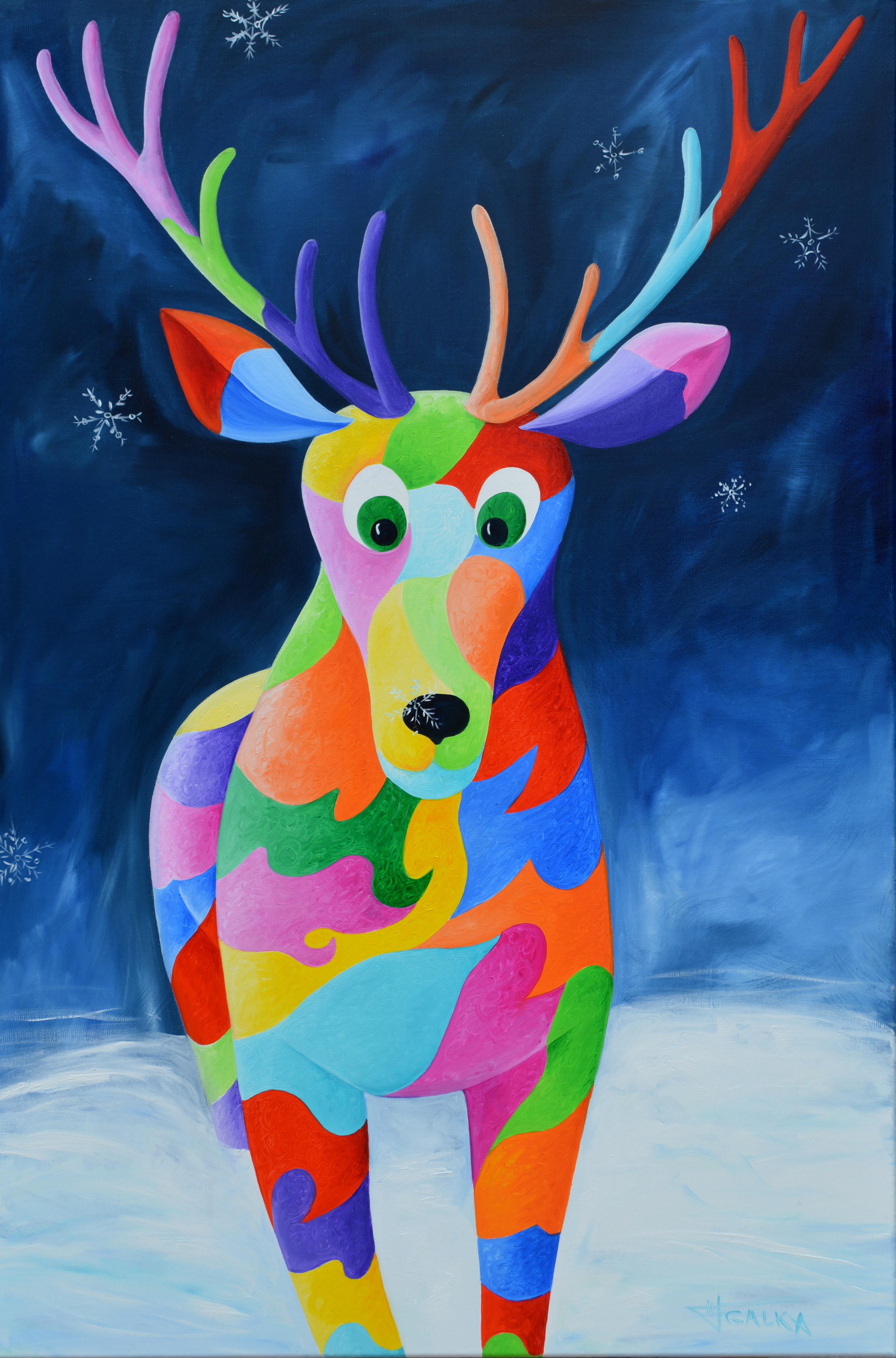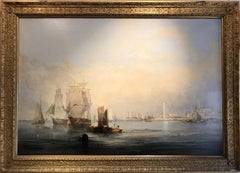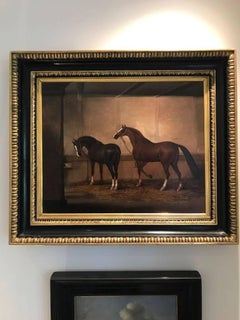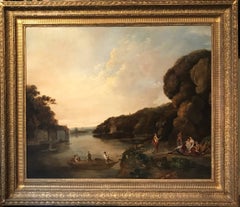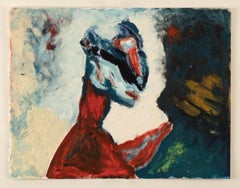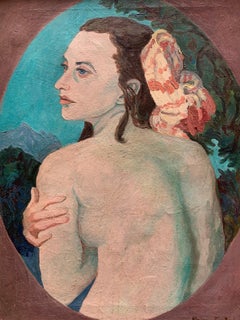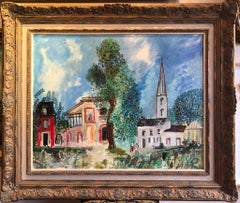
Pleine Lumiere
View Similar Items
Carlos NadalPleine Lumiere 1993
1993
About the Item
- Creator:Carlos Nadal (1917-1998, Spanish)
- Creation Year:1993
- Dimensions:Height: 48.82 in (124 cm)Width: 41.54 in (105.5 cm)
- Medium:
- Movement & Style:
- Period:
- Condition:
- Gallery Location:London, GB
- Reference Number:1stDibs: LU67333343611
Carlos Nadal
Carlos Nadal was born in Paris in 1917. Within four years, his family moved to Barcelona.
Nadal’s father owned a commercial design workshop. There he began to work as an apprentice and learned to paint in his early teens. He took art classes at a school on Barcelona’s Calle Caspe. In 1935 Nadal won three awards, including an award from the Watercolors Association of Barcelona, the Mural Composition Count Lavern and the Masriera prize. A year later, Nadal received a scholarship from the Barcelona City Council and because of which he was able to attend the Escola Superior de Belles Arts de Sant Jordi.
Nadal exhibited for the first time in a collective exhibition at the Galeries Dalmau in 1941, and he had his first solo exhibition at La Pinacoteca in Barcelona in 1944. In 1946 the Barcelona City Council again granted him a scholarship to continue his education in Paris at École des Beaux-Arts. In the French capital, he took part in the Autumn Salons.
In 1948 Nadal married the Belgian sculptor Flore Joris and moved to live in Belgium. Here, he stated that he discovered the effects of light on painting and the use of color that would already be a distinctive sign of his work. The influence of Fauvism on Nadal’s paintings was remarkably clear. There was continuous success for the artist in Belgium and he remained very active, exhibiting there as well as in France, Spain, Amsterdam and the United States. His subjects were varied and included beaches, urban landscapes, natural landscapes, seascapes and more.
In 1954 Nadal exhibited with great success at Kunstverein Düsseldorf and at the Royal Academy in London, and won the painting prize at the International SPA Contest. During the same year, he met Pablo Picasso on the Côte d'Azur and began a great friendship with the artist. Nadal’s work can be found in the Barcelona Museum of Contemporary Art, the Royal Museum of Brussels and more.
Find a collection of Carlos Nadal art on 1stDibs.
(Biography provided by Galeria Luis Carvajal)
- Grand 19th Century English Marine Painting in Stunning LightBy John Wilson EwbankLocated in London, GBJohn Wilson Ewbank (1799 - 1847) Shipping in the Harbour, South Shields Oil on canvas 39.5 x 58 inches unframed 47.75 x 66.5 inches framed Provenance: Christie's October 2002; Lot 11. Fine Art Society; Private Collection This marvellous up to scale Ewbank is full of light and warmth and almost certainly his greatest work of the sort rarely - if ever - seen on the market. John W. Ewbank (4 May 1799–28 November 1847), was an English-born landscape and marine painter largely operational from Scotland. The Humber river is a large tidal estuary on the east coast of Northern England. Life Ewbank was born at Darlington on 4 May 1799, the son of Michael Ewbank, an innkeeper. He was adopted as a child by a wealthy uncle who lived at Wycliffe, on the banks of the River Tees, in the North Riding of Yorkshire. Intended for the Roman Catholic priesthood, he was sent to Ushaw College, from which he absconded. In 1813 Ewbank was apprenticed to Thomas Coulson, an ornamental painter in Newcastle. In around 1816 he moved with Coulson to Edinburgh, where he had some lessons with Alexander Nasmyth. He found work both as a painter and a teacher. He was nominated in 1830 one of the foundation members of the Royal Scottish Academy. In 1833 he is listed as living at 7 Union Street on the eastern fringe of the New Town in Edinburgh. Works His sketches from nature were especially admired, and a series of 51 drawings of Edinburgh by him were engraved by W. H. Lizars for James Browne's Picturesque Views of Edinburgh (1825). He also made a reputation with cabinet pictures of banks of rivers, coast scenes, and marine subjects. As an illustrator he illustrated some early editions of Scott's Waverley Novels and one edition of Gilbert White...Category
19th Century Old Masters Figurative Paintings
MaterialsOil
$186,149Free Shipping - 18th Oil Painting Horses Feeding at the StablesBy James SeymourLocated in London, GBJames Seymour (1702–1752) Feeding Time in the Stables Oil on canvas 32 x 38 inches inc. frame Provenance: Private Collection, Lambourn James Seymour (1702–1752) was an English painter, widely recognized for his equestrian art. Seymour was born in London. His father was an amateur artist and art dealer, whose other business dealings (as a banker, goldsmith, and diamond merchant) afforded young Seymour the leisure time to study art on his own, either his father's or the art at the Virtuosi Club of St. Luke - a gentleman's club his father belonged to, specializing in art. In a short time the boy was a self-taught artist, familiar with many of the prominent artists of the period. Seymour's love of art was matched only by his love of horses. He began spending time at racetracks early on, and before long found himself absorbed in the sport - drawing, painting, owning, breeding, and racing horses. His art proved popular among the prominent sporting families of the day, eventually garnering Seymour patrons in Sir William Jolliffe and Charles Seymour, 6th Duke of Somerset...Category
18th Century Old Masters Animal Paintings
MaterialsOil
- 18th Century English Oil Landscape Painting: Elegant Figures alongside River WyeBy Attributed to William MarlowLocated in London, GBAttributed to William Marlow (English, 1740-1813) Elegant Figures alongside the River Wye 1790 131 x 152 cm, inc. frame This quiet bucolic scene shows figur...Category
Late 18th Century Old Masters Figurative Paintings
MaterialsCanvas, Oil
- 17th Century Classical Oil Painting - Diana With Her Attendants in a GrottoBy Abraham van CuylenborchLocated in London, GBAbraham van CUYLENBROCH (1620-1658) Diana With Her Attendants in a Grotto 1651 signed oil on panel 12.2 in x 15.7 inches, inc. frame; 31 x 40 cm Provenance: Sale of Sotheby's Lo...Category
17th Century Old Masters Figurative Paintings
MaterialsOil
- William III at the Battle of the BoyneBy Jan WyckLocated in London, GBJan Wyck (1645 - 1702) William III at the Battle of the Boyne Oil on Canvas 33 1/4 X 28 inches framed Jan Wyck was born in Haarlem, the son and pupil, of the painter Thomas (van) Wyck (c.1616–1677). Wyck was renowned in England for being a specialist at painting horses in battle and hunting scenes. He brought the Dutch equestrian portrait genre to England. His oil studies of individual horses are perhaps his most original contribution to the history of English art. This painting by Wyck depicts the Battle of the Boyne, in 1690 with William III proudly mounted on his horse. The battle was part of the Williamite war in Ireland that spanned three years between the forces of the deposed King James II of England...Category
1690s Figurative Paintings
MaterialsOil
- 18th Century Oil Painting Portrait of Provost John Pitcairn of DundeeBy Sir Henry RaeburnLocated in London, GBThe pendant to the present portrait showing John Pitcairn's wife Jean, née Robertson, is in the Huntington Art Gallery, San Marino. Both works are datable to the 1790s. Pitcairn, who served as Provost of Dundee from 1782-84, a position his father-in-law also held from 1731-32, later sat to Raeburn for another portrait, dated to circa 1820, which is now in the Royal Scottish Academy, Edinburgh Sale of Christie's London: Wednesday, July 9, 2014 [Lot 00212] Old Master & British Paintings Day Sale Sold For 22,500 GBP Premium Provenance By descent from the sitter to his great-grandson, Ronald Andrew Pitcairn of Pitcullo; Christie's, London, 25 June 1904, lot 58 (200 gns. to Wallis). Alexander Reid, Glasgow. With Agnew's, London, where acquired by A.R. Wilson Wood, 7 April 1909; Christie's, London, 26 June 1914, lot 78 (850 gns. to Agnew). Anonymous sale; Christie's, London, 24 November 1972, lot 27 (320 gns.) Private collection, Dublin, Ireland Exhibition Edinburgh, Royal Scottish Academy, 1876, no. 256 Literature W. Armstrong, Sir Henry Raeburn, London, 1901, p. 110. J. Greig, Sir Henry Raeburn, R.A., His life and work with a catalogue of his pictures, London, 1911, p. 55. R. Asleson and S.M. Bennett, British Paintings at The Huntington, New Haven and London, 2001, p. 312, fig. 12 Sir Henry Raeburn FRSE RA RSA (4 March 1756 – 8 July 1823) was a Scottish portrait painter and Scotland's first significant portrait painter since the Union to remain based in Scotland. He served as Portrait Painter to King George IV in Scotland. Raeburn was born the son of a manufacturer in Stockbridge, on the Water of Leith: a former village now within the city of Edinburgh. He had an older brother, born in 1744, called William Raeburn. His ancestors were believed to have been soldiers, and may have taken the name "Raeburn" from a hill farm in Annandale, held by Sir Walter Scott's family. Orphaned, he was supported by William and placed in Heriot's Hospital, where he received an education. At the age of fifteen he was apprenticed to the goldsmith James Gilliland of Edinburgh, and various pieces of jewellery, mourning rings and the like, adorned with minute drawings on ivory by his hand, still exist. Soon he took to the production of carefully finished portrait miniatures; meeting with success and patronage, he extended his practice to oil painting, at which he was self-taught. Gilliland watched the progress of his pupil with interest, and introduced him to David Martin, who had been the favourite assistant of Allan Ramsay the Latter, and was now the leading portrait painter in Edinburgh. Raeburn was especially aided by the loan of portraits to copy. Soon he had gained sufficient skill to make him decide to devote himself exclusively to painting. George Chalmers (1776; Dunfermline Town Hall) is his earliest known portrait. In his early twenties, Raeburn was asked to paint the portrait of a young lady he had noticed when he was sketching from nature in the fields. Ann was the daughter of Peter Edgar of Bridgelands, and widow of Count James Leslie of Deanhaugh. Fascinated by the handsome and intellectual young artist, she became his wife within a month, bringing him an ample fortune. The acquisition of wealth did not affect his enthusiasm or his industry, but spurred him on to acquire a thorough knowledge of his craft. It was usual for artists to visit Italy, and Raeburn set off with his wife. In London he was kindly received by Sir Joshua Reynolds, the president of the Royal Academy, who advised him on what to study in Rome, especially recommending the works of Michelangelo, and gave Raeburn letters of introduction for Italy. In Rome he met his fellow Scot Gavin Hamilton, Pompeo Girolamo Batoni and Byers, an antique dealer whose advice proved particularly useful, especially the recommendation that "he should never copy an object from memory, but, from the principal figure to the minutest accessory, have it placed before him." After two years of study in Italy he returned to Edinburgh in 1787, and began a successful career as a portrait painter. In that year he executed a seated portrait of the second Lord President Dundas. Examples of his earlier portraiture include a bust of Mrs Johnstone of Baldovie and a three-quarter-length of Dr James Hutton...Category
18th Century Old Masters Figurative Paintings
MaterialsOil
- Bouquet de dahliasBy Louis ValtatLocated in Jerusalem, ILA beautiful oil painting by French artist Louis Valtat. Featuring a colorful display of a flower bouquet of dahlias.Category
1940s Fauvist Figurative Paintings
MaterialsCanvas, Oil
- ElLocated in New York, NYOil paint on paper.Category
2010s Fauvist Figurative Paintings
MaterialsOil
$1,000 Sale Price20% Off - Adriana Pincherle (1905- 1996). A lady with a turban and green shadows.By Adriana PincherleLocated in Firenze, ITAdriana Pincherle, (1905, Rome - 1996, Florence). A lady with a turban and green shadows in a landscape. Italian female painter, active in Rome and from 1943 in Florence. Painting signed and dated lower right: Adriana Pincherle. 1973. Oil painting on canvas. The simple composition, which represents a woman from behind, bears the influence of Matisse's avant-garde style, with bold and refined color combinations. The shape is created with color, creating an almost surreal and highly expressive effect. The painter once said: "My painting has always been figurative, not realistic. In this sense I felt very similar to the Informal movement, which, fundamentally, pushed my passion for color to the extreme." FREE SHIPPING in Italy and Europe Artist Biography: Pincherle Adriana Rome 25 December 1905 - Florence 8 January 1996 Adriana was born in Rome on 25 December 1905, into a family in which two cultures were intertwined: the Jewish one of her father, the engineer Carlo Pincherle, of Venetian origins and in love with painting, and the Catholic one of her mother, Isa di she. De Marsanich, a noble but decayed Hungarian. Adriana is the eldest child and two years older than her brother Alberto, known to the literary world under the pseudonym Alberto Moravia As Pincherle herself says about her, as a child she spent hours admiring her father who painted watercolours, and it was perhaps then that her interest in drawing and above all her particular sensitivity towards color was born. Thus, having completed her classical studies, she began to attend the "ladies" atelier of the engraver Alfredo Petrucci and the free nude courses at the Academy, where she met Mimmo Spadini and Scipione, and came into contact with Roman art. In 1931 she made her debut at the collective "First Roman exhibition of female art" at the "Galleria di Roma", while the following year, at the same gallery, she exhibited a solo show together with Corrado Cagli, already attracting the attention of critics, famous comment by Longhi, cited several times by Pincherle herself, who prefers the "sissy" between the two artists. As evidence of the results achieved by Adriana since her first works, we remember that among her works presented in 1932 there was also the famous "Standing Self-Portrait", now in the Uffizi Pincherle's growth passes through places and periods common to both the Roman School and the school of painters of the via Cavour group (Mafai, Raphaël, Scipione), with tangents and deviations, but his pictorial research arrives at original solutions independent of any label . Fundamental to the maturation of her art was her stay in Paris in 1933, in which Pincherle admired and studied closely the Fauves, Renoir and in particular Matisse. In the same year she exhibited for the first time in Florence at the Sala d'arte delle Nazioni with Milena Barilli...Category
1970s Fauvist Figurative Paintings
MaterialsCanvas, Oil
- Looking at the WorldBy Paula CraioveanuLocated in Santa Monica, CAOil on canvasCategory
21st Century and Contemporary Fauvist Interior Paintings
MaterialsCanvas, Oil
$3,040 Sale Price20% Off - French Contemporary Art by Galka - Chat PercheLocated in Paris, IDFOil on linen Galina Navodnitchaia-Malfoy alias Galka is a French artist born in 1971 who lives and works in Callians near Cannes in France. At the School of Fine Arts in Brest, Bela...Category
2010s Fauvist Figurative Paintings
MaterialsLinen, Oil
- French Contemporary Art by Galka - FelixLocated in Paris, IDFOil on canvas Galina Navodnitchaia-Malfoy alias Galka is a French artist born in 1971 who lives and works in Callians near Cannes in France. At the School of Fine Arts in Brest, Bel...Category
2010s Fauvist Figurative Paintings
MaterialsCanvas, Oil
